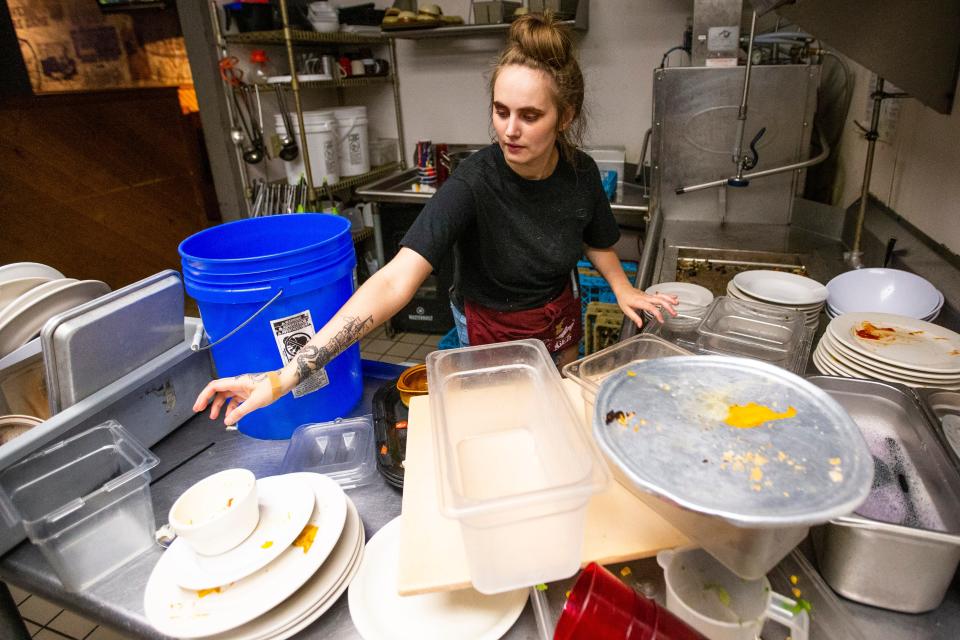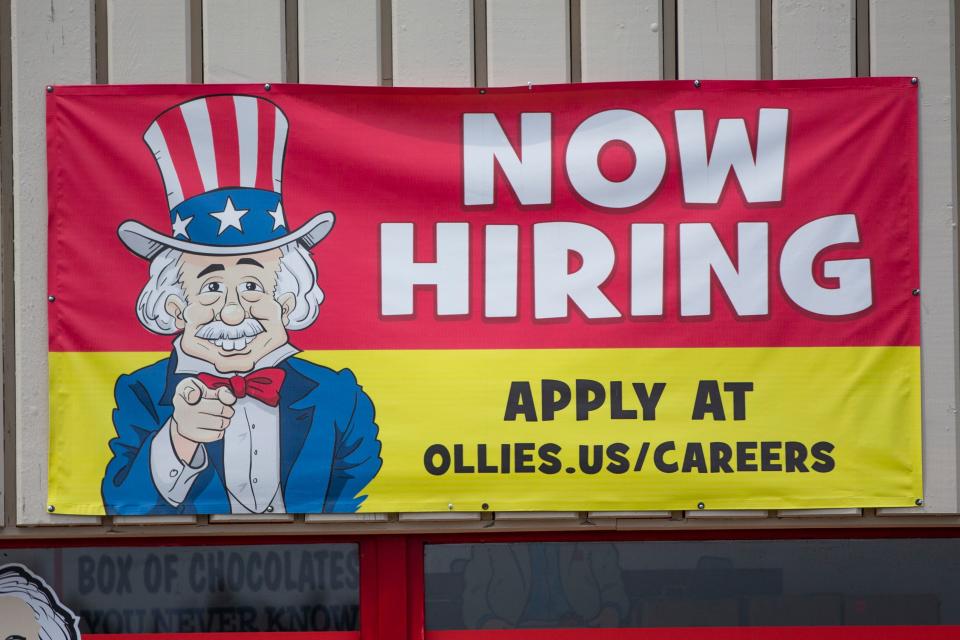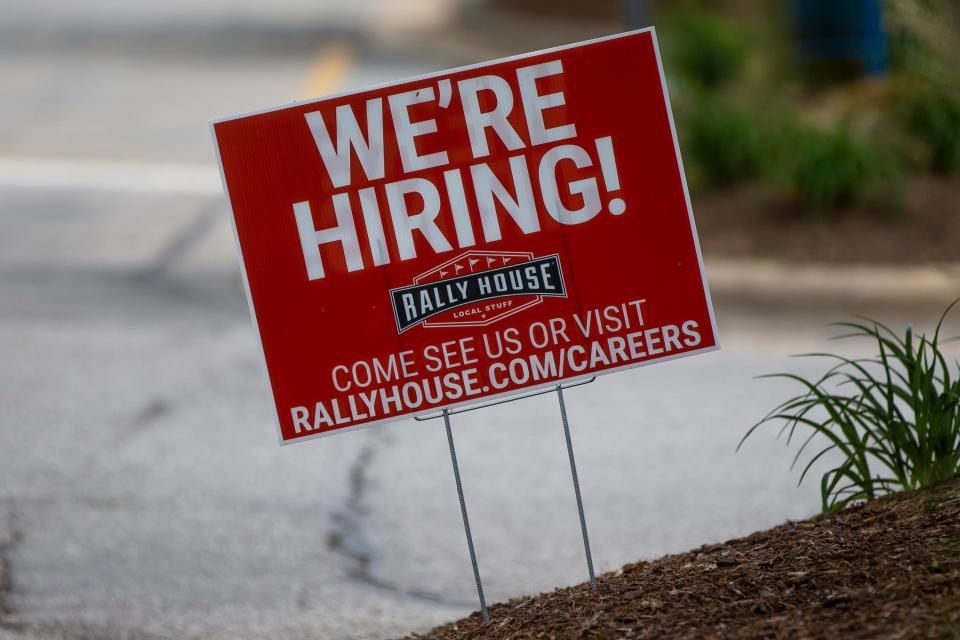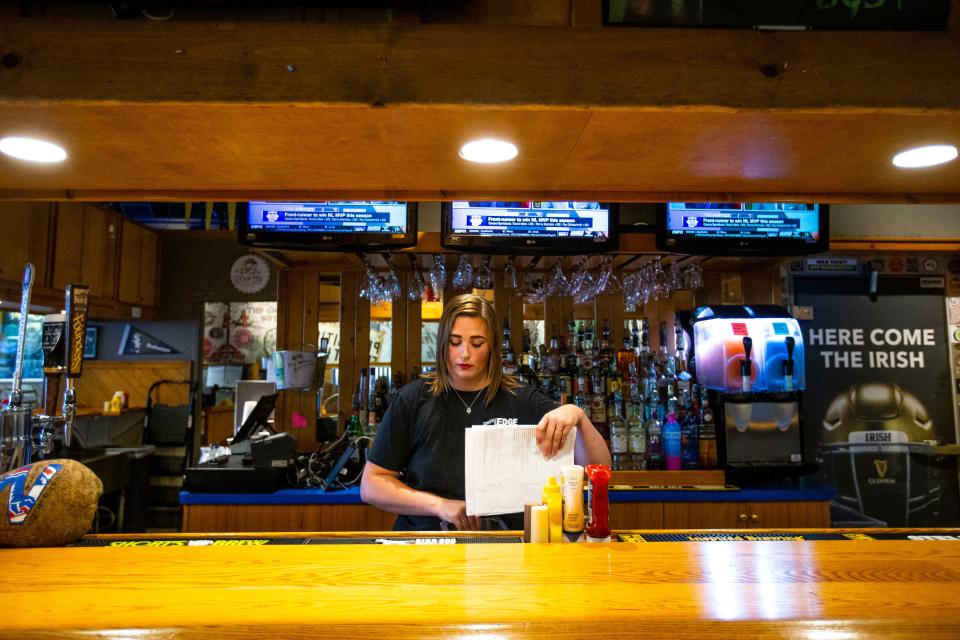Tight labor market, rising costs and possible recession: How local businesses are surviving

At the height of the pandemic, when restaurants and other businesses deemed “non-essential” were consequently closed and staff were temporarily laid off as businesses tried to pivot, Chicory Cafe and Taphouse on the Edge co-owner Jeff Morauski aimed to see the light at the end of the tunnel.
“We had to get through this, it’s not going to be like this forever and, hopefully, get back to normal,” he said. “That was the conversation for a year and a half, and for the most part, we are back to normal.”
As the vaccine rollout expanded, mask mandates relaxed, hospitalization rates began to decline and the stimuluses allowed for more disposable income, consumers began to consume more.
But though business may be back, many local businesses are still not operating at their full capacity, mostly due to lack of staffing.

And that light at the end of the tunnel has become bleaker for owners like Morauski.
“I don’t know if I see that light, unfortunately,” he said. “It’s hard for me to keep convincing my managers that it’s going to get better when I don’t know how it is going to get better myself.”
According to Department of Labor statistics, Indiana’s unemployment rate was at 2.2% in April — the lowest its been in over a decade.
But industries such as healthcare, education and hospitality are still struggling to fill open positions. All three industries are dealing with a common denominator in which the pandemic heightened pre-existing issues, causing further burnout.
► Burnout: Doctors, nurses risked their lives to battle COVID. Now they're facing a mental health crisis
► How schools are handling it: What you need to know about Indiana's teacher shortage
► Still not enough workers: Travel and tourism rebounds in the South Bend area.
And it became enough for many employees to find work in other fields.
"There’s no question in my mind that when you pull a rug out from under an industry and you tell it to shut it the (expletive) down, anyone who’s not hyper ingrained into it is just going to leave because there’s zero job stability now," said Alain Helfrich, co-owner of the Haunt of Hounds group, which owns several local restaurants, including Fatbird, Propoganda Pizza and newly opened Oak and Ash BBQ. "Who's going to keep doing that but the crazy people?"

A workers' market
A historically low unemployment rate equals the pool of applicants searching for jobs is noticeably lower and that can even be seen at larger St. Joseph County employers, including the University of Notre Dame.
Matthew Blazejewski, the director of talent acquisition and learning, and organizational development for the university, said that although the university’s just over 100 current open positions is normal in preparation for the upcoming school year, the number of candidates applying is lower than before.
“We have seen smaller pools of applicants for many of our positions, just like most other employers, I think, locally and across the country would,” Blazejewski said. “Despite that, we continue to attract and hire a lot of strong candidates, especially from our region. … It is a different industry (than hospitality) and, while we are certainly not immune from all of that, we do find that when people join Notre Dame, they typically stay for a long career.”
But to attract long-term employees, Blazejewski said, Notre Dame has been implementing different practices such as offering sign on and retention bonuses and allowing for one-way video interviews where a candidate can answer supplied questions via video that could be an addition to their résumé and cover letter. The practices and added bonuses are something the university hasn't typically offered in the past, Blazejewski said.
“These challenges with the current labor market have resulted in us implementing some new practices that perhaps we were not doing two, three or four years ago," he said. "The market is different, but what we see is that it's just a matter of the size of the candidate pool. And so we're still able to hire the number of staff that we need in order to run our operations effectively."
► 'Sons and daughters': Notre Dame fight song now recognizes contributions of women to university
Like Notre Dame, local restaurants also have gotten creative in trying to attract and retain talent. Morauski also has offered sign up bonuses, increased overall pay wages and extended more benefits. And it’s worked — kind of.
“It's definitely gotten a little bit better in the last couple of months but, honestly, I think what most industries are doing — including the restaurant industry — is trying to figure how to do more with less,” Morauski said. “(Now,) we get some products pre-sliced that we would've sliced ourselves before or get more ready-to-eat products to try and save some labor and time.”
Although the low unemployment rate signals that there are fewer people without jobs who are actively looking for jobs, it does not measure the people without jobs who are not looking for jobs.

R. Andrew Butters, assistant professor of business economics and public policy at Kelley School of Business at Indiana University, says the labor unemployment participation rate went through a “ very sharp decline and delayed rebound” with the pandemic that has not completely recovered. Butters points to personal reasons such as former employees opting for early retirement, choosing to stay at home to care for their families or a variety of other personal reasons as to why people are opting to stay home. It is no longer due to enhanced unemployment benefits that have been out of effect in Indiana since spring 2021.
“Unemployment insurance claims are currently at record lows,” Butters said.
► National unemployment numbers unchanged: Economy adds 428,000 jobs in April even as COVID cases edge higher
That, coupled with the overall low unemployment rate, is what’s creating a workers’ market that’s becoming an “acute challenge” specifically to local business owners, says Mitchell Olsen, marketing professor with Mendoza College of Business at Notre Dame, which can ultimately carryover to consumers.
“For businesses in industries that are having an especially difficult time finding and retaining employees, such as retailers and restaurants, their customers will continue to face both higher prices — due to higher labor costs being passed on to consumers — and lower service levels — due to fewer employees being around to help,” Olsen said. “As a result, the heightened challenge of finding and retaining employees can easily carryover to customers as well.”

The cost of supporting business
Since 2019, Helfrich and his Haunt of Hounds business partners have opened three restaurants, with plans to open more concepts, including The Breakfast Club and Hall Pass this year.
But expanding operations can be costly even during a normal economy, and with inflation, higher wages for employees and supply chain issues, it can quickly become a counting game.
“Literally, everything is raised; I’ve never seen that before in my life,” Helfrich said. “It’s not just that beef is expensive, everything is. A toothpick now costs twice as much.”
For an industry that is already notoriously known for working under tight profit margins, Helfrich said, the three main costs that impact restaurant operations are food, employees and building costs. He explained that instead of buying a new building with higher rent, his operating group looks into investing in older buildings that need a simple refresh, which then allows them to reallocate funds to food costs and employee wages.
“So that’s the game that we are playing at the moment,” he said.
Like Haunt of Hounds-owned restaurants, other local restaurants have slightly increased pricing and some have eliminated menu options simply because items have become unavailable.
“I think every time you adjust that menu, it was always somebody's favorite item, which has always been hard in our industry,” Morauski said. “… It's scary. Obviously, we're all raising our prices, which is unfortunate, and we’re trying to figure out ways to not completely pass that on to the customer, but you have to. At the end of the day, you have to because that's just part of business.”
► Did inflation ease more in May?: Food and gas prices probably surged but other increases are slowing.
Increasing menu prices has become the necessary evil in keeping local businesses afloat, but customers at Chicory and Taphouse have so far absorbed the increases without much complaint, Morauski said.
“The last thing I want to do is outprice the market, but everyone watches everyone else's prices and people are now used to paying a couple of dollars more,” he said.
But economists are predicting another economic factor that will certainly factor in consumers' spending habits and the labor force — a recession.
“We’re not in a recession now, but (there are) signals,” Kelley's Butters said.
The Federal Reserve has raised interest rates several times this year, most recently on Wednesday, when it increased it by 0.75 of a percentage point — it's largest rate hike since 1994 — in an aggressive attempt to curb inflation. The Associated Press reports the move will increase its benchmark short-term rate, which affects many consumer and business loans, to a range of 1.5% to 1.75%.
Butters also points out that the war in Ukraine has added further uncertainty, especially when it comes to energy prices and how that directly impacts employers' and households' bottom-line budgets.
And, though we currently are not in a recession, larger businesses are taking cautionary moves.
In Bloomington, The Herald-Times reported pharmaceutical company Catalent is making “disruptive” changes to its work shifts and will eliminate about 200 temporary positions. The Washington Post reported recently that Silicon Valley-based businesses like Facebook and Twitter are slowing hiring while others like Stitch Fix and Bird implemented layoffs.
If a recession does come to fruition, Butters explained, that will ultimately affect people’s spending habits as they may limit recreational expenses, but it also will relax the current tight labor market as those who have voluntarily chosen not to work may be inclined to do so.

The magic answer
But even if a recession happens in the future, that doesn’t help businesses that need workers now.
Helfrich, who employs just under 100 employees, said he had trouble hiring enough staff for his growing businesses until about three months ago. Now, he can’t directly point to what’s changed, only hypothesizing that opening new concepts is enticing those to work for something different. He's now waiting for the next generation of dedicated and talented chefs to step up in the South Bend market.
“We’re doing something right, and I think that’s clear,” Helfrich said.
For Morauski, he said he could use about 20 more people for his operations to run smoothly. But because of the shorter staff, he’s had to make decisions such as closing the Mishawaka location to redirect staff to help with catering services at times. He’s also made moves to cutback operations by closing Taphouse on Sundays in the summertime so current employees can have the time off to avoid further burn out. But come football season, it will be all hands on deck once again.
“It's just hard as an owner to see everyone stressed out,” Morauski said. “It’s not fun to go to different locations, and every shift, it's the same thing. Before, I could come in and help or raise morale a bit to make things easier, like send people home earlier, but we're so tight and everyone is wearing so many hats, it's tough. I don't know what the answer is — I wish I had that wand and that answer because that would be on all the posters outside.”
Contact Mary Shown at 574-235-6244 and mshown@gannett.com. Follow her on Twitter: @maryshownSBT and @marketbasketSBT.
This article originally appeared on South Bend Tribune: Jobs in South Bend: Tight labor market pushes local business owners
